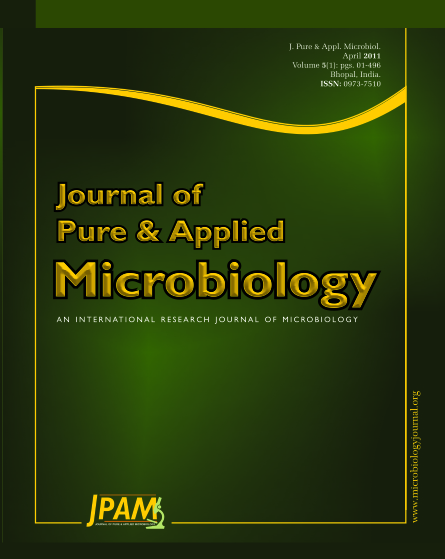Chemical agents are concerned with the death rate and the effect on it of antimicrobial agents (substance that kill microbes or inhibit their growth). The effectiveness of a chemical antimicrobial agent is affected by time, temperature, pH and concentration. The effect of salt solution and chlorine solution on the micro flora of fish were examined by dipping the fishes in different concentration of salt (5%, 10%, 15% and 25%) for 15 mins and chlorine solution (2ppm, 6ppm and 10ppm) for 2-3 mins at a temperature of below 4oC. And one fish was just preserved by ice only, which where served as a control for both of them. Thus dipping reduces the number of microorganisms in all culture conditions studied. For untreated fish (that is the control) highest number of bacteria were obtained on nutrient agar plates incubated at 30oC for 72 hours where as fishes that were dipped gets decreased as the concentration of the solutions were increased in both cases.
Fish, Microflora, Salt, Chlorine
© The Author(s) 2011. Open Access. This article is distributed under the terms of the Creative Commons Attribution 4.0 International License which permits unrestricted use, sharing, distribution, and reproduction in any medium, provided you give appropriate credit to the original author(s) and the source, provide a link to the Creative Commons license, and indicate if changes were made.


